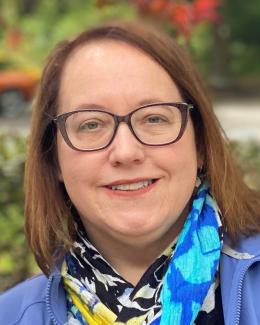June 19, 2017 – Claus Daniel was initially attracted to the Department of Energy's Oak Ridge National Laboratory by its reputation as a world leader in materials research. What has kept him at the lab is the opportunity to work with experts across many disciplines using the latest tools to convey basic science to applications with the potential to improve society.
Daniel came to ORNL in 2005 as a Eugene P. Wigner Fellow studying surface treatment and mechanical behavior of metals. His focus later switched to electrochemical energy storage, and he became the founding director of DOE’s Battery Manufacturing R&D Facility at the lab. Today he is director of ORNL’s Sustainable Transportation program, overseeing interdisciplinary research and industry collaborations to help move the lab’s innovations to market.
One of his first experiences at the lab was finding the right kind of diagnostic lasers for his work—which he found in the Energy and Transportation Science Division. The collaborative nature of the experience was eye-opening for Daniel and was a springboard for his concentration in the automotive space.
“I like to challenge people to go out and find the best possible collaborators and the best equipment you need,” he said. “The beauty of this place is that no matter what problem you’re facing, it’s likely that there is someone in the community of world experts on that certain topic just down the hall.”
Daniel points to DOE’s investments in the laboratory as a “great opportunity for someone in an applied science program. If we were on our own, we couldn’t afford to maintain an aberration-corrected transmission electronic microscope, a Spallation Neutron Source, or a supercomputer,” he said. “All of the DOE Office of Science facilities here are an integral part of what we do and give us a chance to take our knowledge and capabilities to have an impact on society.”
Everything’s cooler with astronauts
Daniel relates how he first became interested in his field during high school in Germany, when a chemistry teacher suggested he attend a conference organized by the country’s materials research society. “I had no idea about materials science at the time, but at that conference I heard an astronaut, physicist Ulf Merbold, talk about the cool materials experiments he did in space.”
Daniel was hooked. During his college career, he took advantage of a partnership his local university had with other institutions as part of the European School of Materials Science to study in both Germany and France. He went on to earn two master’s degrees—one focused on metals and ceramics from Saarland University, and the other focused on polymers and composites from the Lorraine National Polytechnic Institute. Daniel then earned his doctoral degree in materials science from the University of Saarlandes in collaboration with the Max Planck Institute for Metals Research.
His first exposure to ORNL was reading scientific literature written by world-renowned ORNL materials scientists Peter Blau and George Farr, Daniel noted. He actively pursued the Wigner Fellowship at the lab as a result.
Daniel’ research at ORNL has focused on increasing the active material content in batteries so they can safely deliver more energy over a longer lifetime. He and other researchers at the lab develop new materials for batteries, scale up the technology for larger devices, and use high-performance computing to better understand battery behavior.
Another key area Daniel is pursuing these days is innovating roll-to-roll manufacturing techniques for battery components, fuel cells, and water purification. Roll-to-roll refers to a more efficient, faster manufacturing method in which components are printed on flexible substrates—for instance, printing membranes used to filter water.
ORNL is a “fantastic place to work, very diverse, and allows creative freedom. You can do whatever you want from pursing individual R&D projects to contributing to really big science initiatives,” Daniel said.
Mentoring: A ‘duty’ to pay it forward
Daniel emphasized the importance of mentoring in his own career, and he carries that support forward to young researchers at the lab. “We have a duty to mentor and more,” he said. “We need to help early career researchers build their resume so that one day they can write strong research proposals.” ORNL’s fellowships and DOE’s early career awards are helpful in covering funding for younger researchers while they build that expertise, he noted.
Outside the lab, Daniel stays busy as the father of two young teens. Because both his children are interested in science, lately that has meant more engagement with the FIRST (For Inspiration and Recognition of Science and Technology) Robotics program and working closely with a team at Farragut High School. The Farragut team was a winner at the recent Smoky Mountains Regional FIRST Robotics Competition in Knoxville, qualifying the students for the world championships in Houston, where they competed through the semifinals.
“It’s very exciting to see some of the kids who enter the robotics program a little bit timid, and then in one season see them become engaged, informed, and enthusiastic—realizing that engineering is something everyone can get involved in,” Daniel said. “The key thing is to make sure that kids who have the talent get to know more about engineering fields and what’s possible for them.
“My son tells me he wants to work at ORNL and to be my boss some day,” Daniel said. “Maybe it will happen. That would be pretty cool.”
He added, “At ORNL anything we do here is only possible because of teamwork. It’s something we need to remind ourselves of every day. We have a great reputation here, and we must continue to invest in our staff to stay on an excellent course.”
UT-Battelle manages ORNL for the DOE's Office of Science. The Office of Science is the single largest supporter of basic research in the physical sciences in the United States, and is working to address some of the most pressing challenges of our time. For more information, please visit http://energy.gov/science/. —by Stephanie Seay


